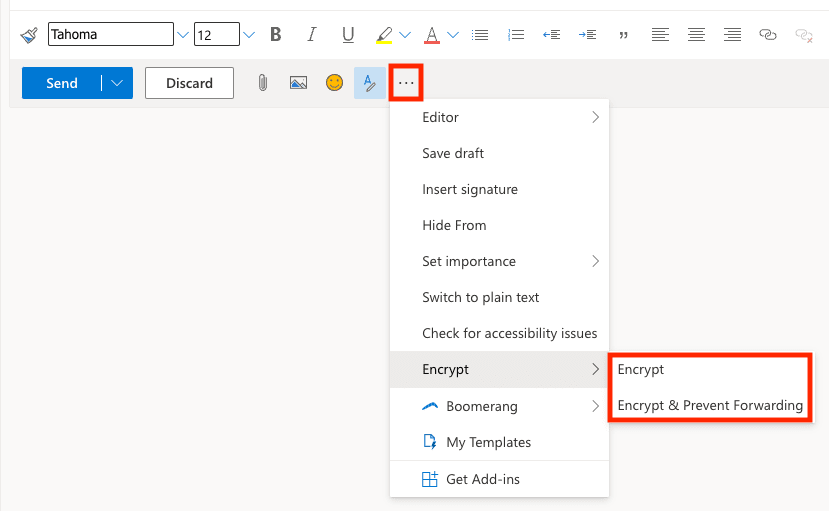Managing emails can feel like a full-time job, but Microsoft Outlook is here to change that. With over 400 million active users worldwide (Statista, 2023), Outlook has become a go-to tool for individuals and businesses. Yet, many users barely scratch the surface of its capabilities.
In this guide, we’ll reveal 11 underutilized Outlook email features designed to simplify your inbox and supercharge your productivity.
What Makes Outlook Email a Must-Have Tool?
Outlook email is not just another email service; it’s a tool designed to simplify your life. Microsoft designed Outlook to provide a seamless experience across devices, keeping productivity at the forefront. Outlook stands out for its enterprise-grade security features, including data encryption and protection against phishing scams.
11 Features of Microsoft Outlook That You Need to Use

Many people use Microsoft Outlook, but not everyone knows how to make the most of it. Its many buttons and tabs can seem overwhelming and make things look complicated. But actually, Outlook has some great features that a lot of us don't use.
11 Outlook Features and How to Use Them
1. Integrated Office Apps

Outlook's integration with Office apps like Word, Excel, and PowerPoint enables users to view and edit attachments directly within the email environment, streamlining the workflow and enhancing productivity.
This feature eliminates the need for downloading attachments and folders for editing, directly impacting efficiency and data management.
How to Implement:
- Open an email with an attachment from Word, Excel, or PowerPoint.
- Click on the attachment to preview it within Outlook.
- Select "Edit and Reply" to make changes directly in the Outlook window.
- Automatically attaches the updated document to a reply email
2. Powerful Search
Outlook's powerful search feature goes beyond simple keyword matching, allowing users to use complex queries and filters such as sender, date, and keywords within attachment content.
This enhanced search capability ensures that users can locate messages, contacts, and files quickly, making email management more efficient.
How to Implement:
- Use the search bar at the top of the Outlook window.
- For a simple search, type a keyword related to the email you're looking for.
- For advanced searches, click on the filters icon or use search operators like "from:", "to:", "subject:", and specific dates or ranges.
3. Calendar Integration

Calendar integration in Outlook is a powerful tool for managing schedules alongside email. Users can view their calendars, schedule meetings, and get reminders without leaving Outlook.
This feature supports efficient time management by consolidating email and calendar functionalities in one place, simplifying scheduling and meeting organization.
How to Implement:
- From the Outlook navigation pane, select the calendar icon to switch from your inbox to your calendar.
- To create a new meeting or event, click "New Meeting" or "New Appointment."
- Fill in the details, including invitees, date, and time. Use the "Scheduling Assistant" for business customers to find a time that works for everyone.
- Save the event. It automatically syncs across your devices and notifies invitees.
4. Enterprise Grade Security Outlook

Outlook offers enterprise-grade security features designed to protect your data and privacy. This includes encryption, malware scanning of attachments, and phishing protection.
These advanced security measures are crucial for safeguarding sensitive information in both personal and business communications, ensuring that important files and your emails are protected against unauthorized access and cyber threats.
How to Implement:
- To enable encryption, compose your email and click on "Options." Then, choose "Encrypt" and select the encryption option that suits your needs.
- For malware and phishing protection, these features are automatically enabled. However, you can customize your security settings by going to the "Junk Email" options in the "Home" tab and adjusting the protection levels and safe sender lists.
5. Shared Mailboxes and Calendars

Shared mailboxes and calendars in Microsoft Outlook support collaboration by allowing team members to manage emails and schedules together.
This feature, integrated with tools from Microsoft like Microsoft Exchange, makes coordinating schedules and managing team projects easier, promoting seamless communication.
How to Implement:
- To create a shared mailbox, an administrator needs to set it up in the Microsoft 365 admin center. Once created, members can be added who will have access.
- Access the shared mailbox by adding it to your Outlook account through the "Account Settings" under the "File" tab. Click "Add Mailbox" and enter the shared mailbox's name.
- For shared calendars, simply right-click your calendar app in the navigation pane, select "Share Calendar," and choose the colleagues you wish to share it with. They will receive an invitation to view your calendar.
6. Groups

Outlook Groups offers a centralized platform for email discussions, file sharing, and calendar coordination, simplifying team collaboration.
These groups use the same tools available across Microsoft Outlook, ensuring consistency in communication and project management.
How to Implement:
- To create a group, navigate to the "Groups" section in Outlook and select "New Group."
- Define your group's name, add members, and set privacy options. You can choose between public and private settings depending on the nature of your collaboration.
- Once your group is set up, you can start discussions, share files, and manage a group calendar directly from Outlook, facilitating easy collaboration among team members.
7. Inclusive Accessibility Features

Outlook's inclusive accessibility features, such as screen reader support and high contrast themes, ensure that the email accounts and accessible inbox are usable by individuals relying on multiple assistive devices.
This commitment to accessibility underscores Outlook's role in facilitating communication for all users.
How to Implement:
- Enable accessibility features through the "File" menu by selecting "Options," then "Ease of Access."
- Choose the options that best suit your needs, such as enabling the screen reader or selecting a high contrast theme.
- Use keyboard shortcuts to navigate through Outlook without relying on a mouse, enhancing usability for users with mobility impairments.
8. Smart Email Filtering with Clutter

Clutter in Outlook intelligently filters low-priority messages, using data encryption and machine learning to enhance your focus on the most important messages.
It adapts to your email habits over time and in your busy life, improving its filtering accuracy and keeping your inbox organized.
How to Implement:
- To enable Clutter, go to your Outlook settings online through the Outlook web app. Under "Mail" settings, look for "Clutter" or "Focused Inbox" options, depending on your version.
- Train Clutter by marking messages as "Clutter" or moving them to the relevant folder. Conversely, move incorrectly identified emails back to your inbox to teach Clutter about your preferences.
- Regularly check the Clutter folder to ensure no important emails were incorrectly filtered and to further refine its accuracy with your feedback.
9. Premium Outlook Features

Premium Outlook features, available with Microsoft 365 subscriptions, offer advanced functionalities such as ad-free email interface, enhanced security, and cloud storage for increased mailbox storage.
These features provide a more robust, secure, and streamlined email experience, catering to users who require more from their email service than the standard offerings, surpassing alternatives like Yahoo Mail in terms of productivity and integration capabilities.
How to Implement:
- To access Premium Outlook features, you need a Microsoft 365 subscription. Once subscribed, log into your Outlook account, and these features will be automatically available.
- Enjoy an ad-free interface by simply using Outlook as usual—the changes are applied automatically.
- For enhanced security features like advanced encryption, navigate to the settings menu, where you can configure additional security options as per your subscription, leveraging the tools Microsoft has developed for comprehensive protection.
10. Effective Use of Outlook Mobile App Interface

The Outlook Mobile App offers a sleek and intuitive interface designed for efficient email and calendar management on the go.
It includes features like swipe gestures to quickly manage emails, focused inbox to prioritize important messages, and seamless integration with Office apps. Utilizing these features can significantly enhance productivity and ensure you remain connected no matter where you are providing a robust alternative to managing your email on the full desktop version of Outlook.
How to Implement:
- Download the Outlook Mobile App from your device's app store and sign in with your account.
- Customize swipe gestures by going to Settings > Mail > Swipe Options, where you can assign actions like delete, archive, or mark as read to swipes.
- Use the focused inbox by selecting the toggle at the top of your inbox. Outlook automatically filters important emails into the "Focused" tab, while less critical messages go to the "Other" tab.
11. Outlook Email Template

Outlook Email Templates save time and maintain consistency when sending messages that contain similar content. By creating templates for frequently sent emails, you can streamline your communication process, ensuring that you're not rewriting the same emails repeatedly.
This feature is especially useful for professionals who need to send regular updates, reports, or responses.
How to Implement:
- To create an email template, compose a new email and draft the content you want to save as a template.
- Go to File > Save As and choose "Outlook Template" (*.oft) from the Save as type dropdown menu. Name your template and save it.
- When you need to use the template, go to New Items > More Items > Choose Form. In the "Look In" dropdown, select "User Templates in File System," find your template, and click "Open." The template will load, ready for you to customize and send.

.webp)






